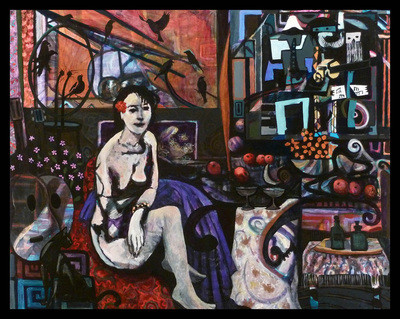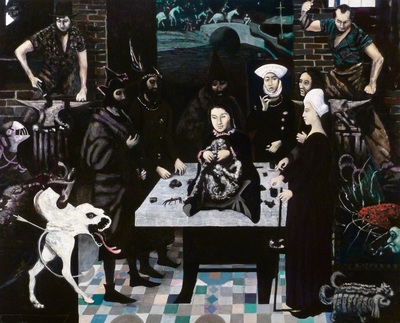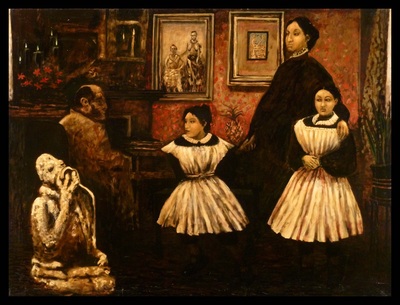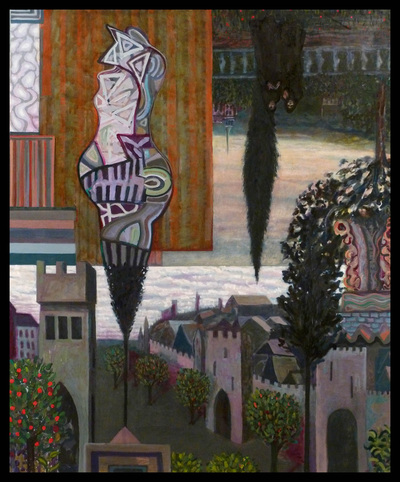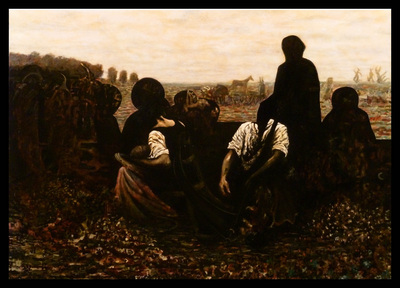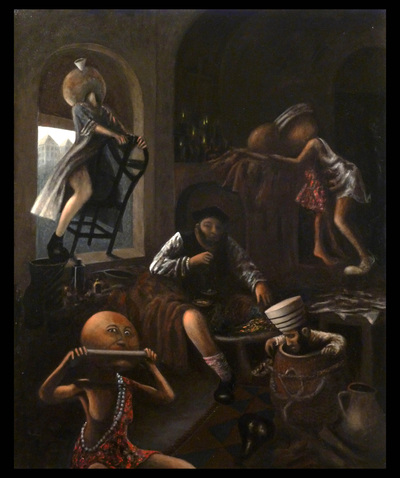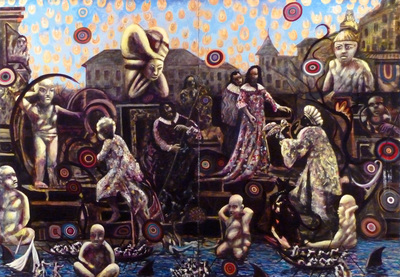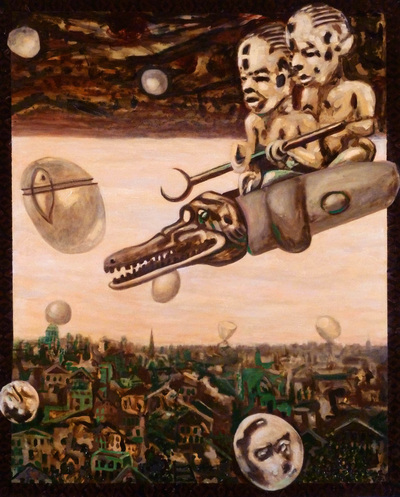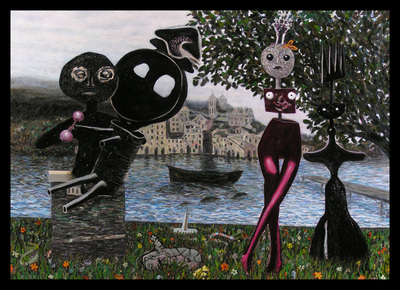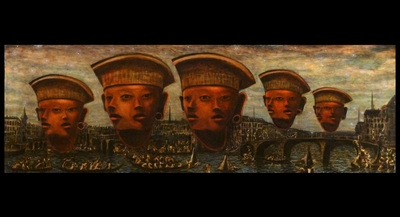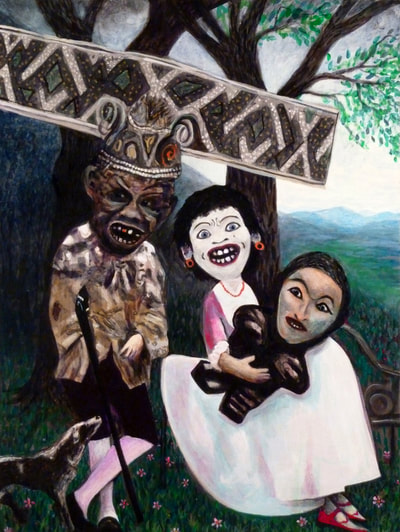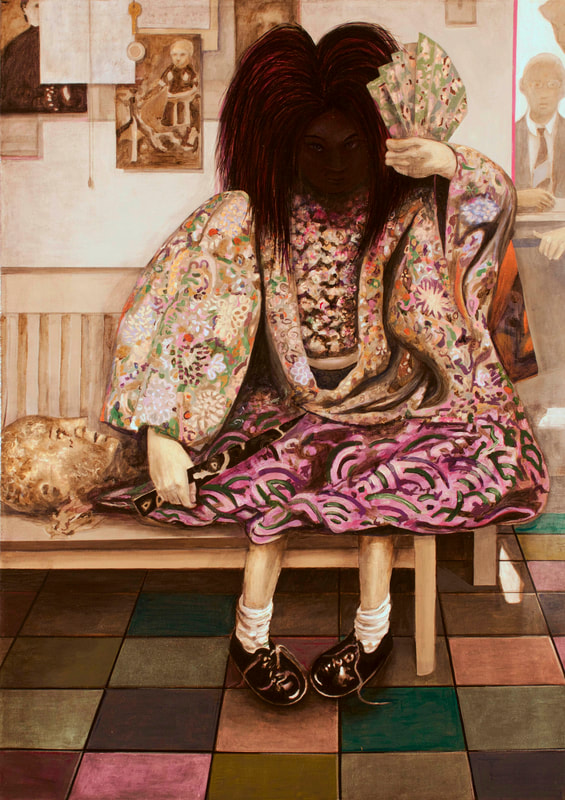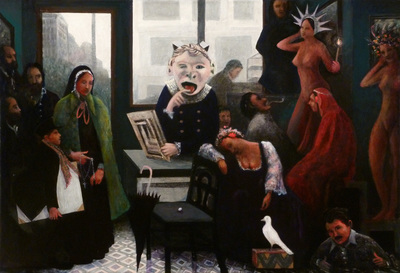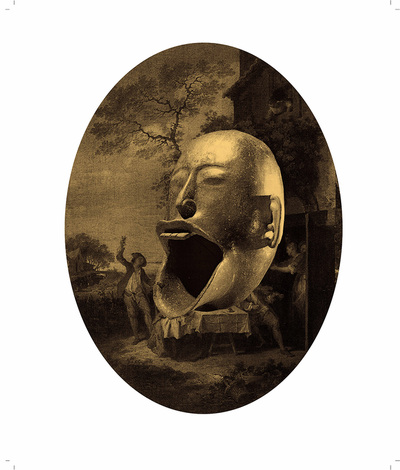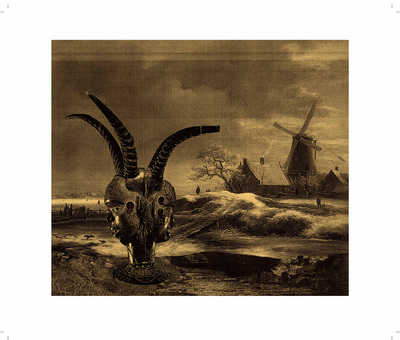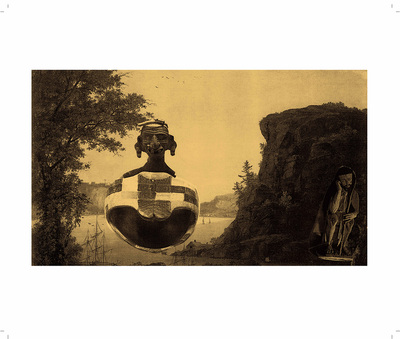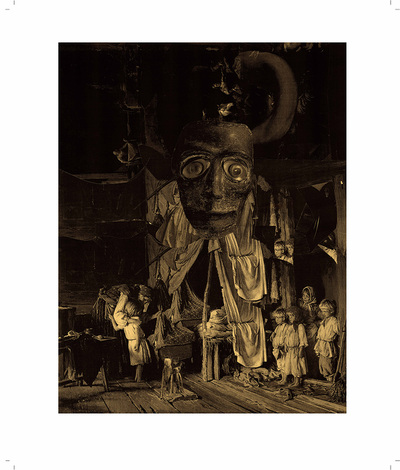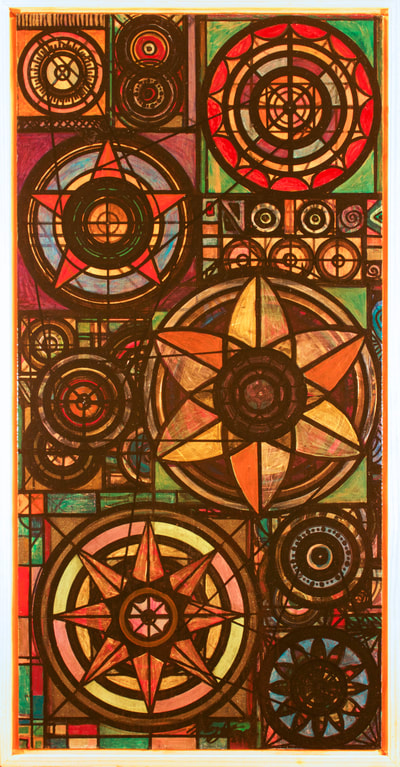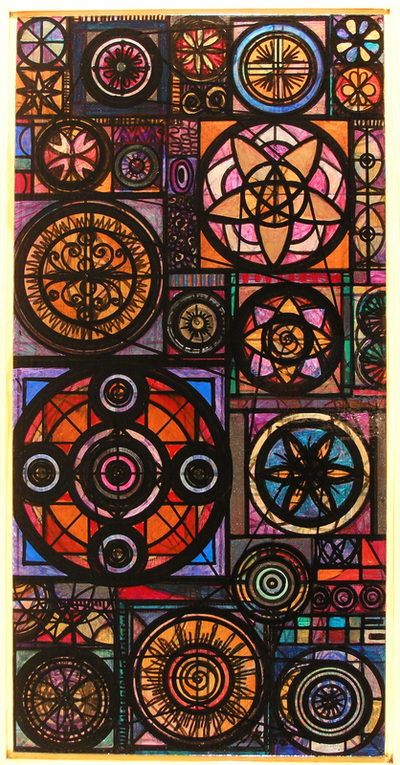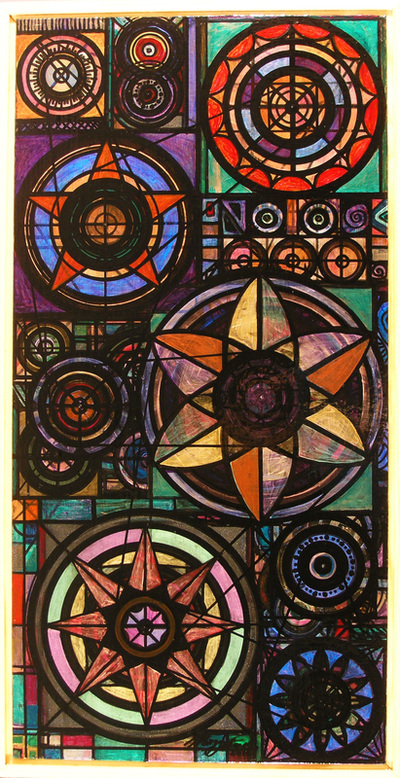Morgan Santander, El Tuito, Mexico
Originally from Mexico, Morgan Santander grew up in Wales and California, earning a B.A. in Painting from the University of California-Berkeley and an M.F.A. in Painting from the University of Chicago. He has been a professor of Painting at the Savannah College of Art and Design since 2001 and has exhibited his work internationally.
Art & Soul: Morgan Santander challenges perspectives at Little Beasts
By Allison HershPosted Apr 15, 2012
Cross-cultural revolution
Artist Morgan Santander, the son of one of Mexico’s greatest contemporary playwrights, has a flair for the theatrical in his own narrative paintings.
“I was brought up around the theater,” he explains, due to the fact that his late father, Felipe Santander, staged major productions across Mexico, Cuba and the Caribbean, launching a movement called Teatro Campesino. “I love the scale of theater and inviting the viewer to relate in real time to the work.”
“Beyond Reconstitution,” Santander’s new solo exhibit showcasing a series of large-format canvases charged with drama, conflict and mystery, opens Thursday at Little Beasts Gallery in Savannah. Using a dark color palette and eerie imagery inspired by Goya, Hieronymous Bosch and Edgar Allan Poe, the artist demonstrates his technical skill and conceptual ambition on canvases as large as 11-by-7 feet.
In “Beyond Reconstitution,” he blends elements of traditional European art with African tribal masks, Chinese statues, aboriginal figures and other unexpected influences. Delightfully anachronistic, Santander’s work is defined by an unbridled creative synergy that transcends time and place, resulting in a provocative cross-cultural mash-up.
“This work deals with post-colonialism and history,” he says. “I want this show to be dramatic and confrontational. Almost all of the paintings are looking back at the viewer.”
In fact, Santander deliberately scales his figures and adjusts the horizon lines to the viewer’s line of sight, ensuring that the audience is physically and psychologically drawn into the scenes at hand, rather than being relegated to the position of a passive observer.
“These are theatrical scenes where you’re a player,” he explains. “I try to tap into the human psyche on every level. I want to encourage people to respond instinctively to the work through confrontation and a sense of enclosure.”
In “The Event,” which depicts a cryptic sale of a nude female slave, Santander borrows elements from disparate sources, including the studio of 19th century French painter Édouard Manet, British Victorian paintings and Spanish Flamenco culture. He assembles an impossible audience of voyeurs from various cultures and time periods, creating and out-of-time scene that defies the chronological fabric of history.
From the nightmarish party scene in “Feste” to the operatic splendor of “Shark Infested Waters,” Santander delights in using art history to jam the time-space continuum, creating dizzying, often unsettling cross-cultural diasporas.
Santander’s latest work is populated by a motley cast of characters from opposite sides of the globe, uniting European royalty and meso-American gods in a series of mind-bending compositions. This hallucinogenic collision of cultures juxtaposes East and West, past and present, inviting a closer examination of the pliable nature of history, culture and identity.
“These images are shocking and confrontational,” Santander says. “They’re not meant to relax you”.
Ultimately, these richly-layered narrative paintings seem designed to encourage reflection upon our current moment in history and to consider the ways in which power determines the ways which cultural identity is defined, constructed and represented. For Santander, painting is more than an act of representation – it is a forum for revolution.
“Historically, I think we are living in a tumultuous time,” he says. “I think paintings should reflect that.”

